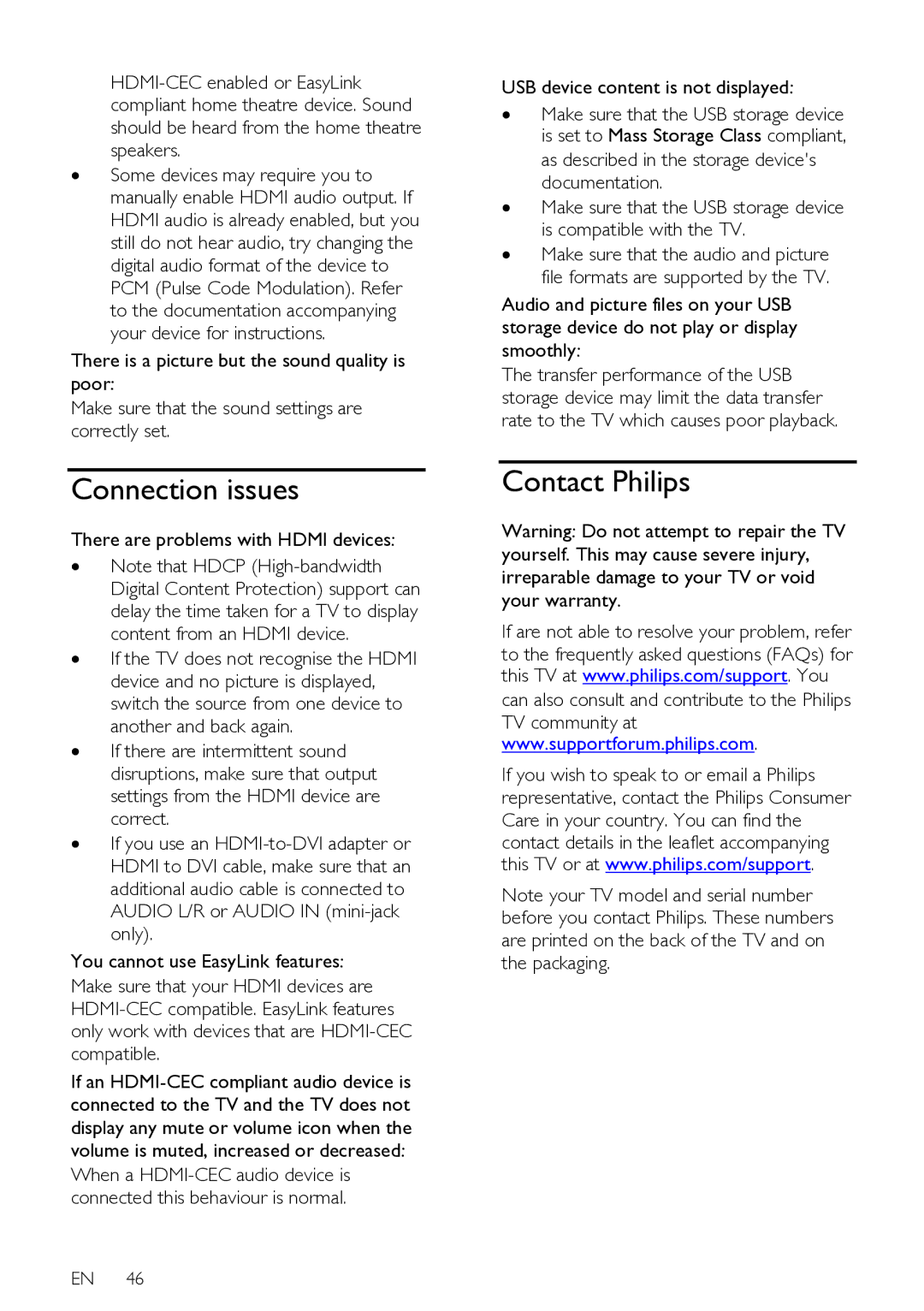∙Some devices may require you to manually enable HDMI audio output. If HDMI audio is already enabled, but you still do not hear audio, try changing the digital audio format of the device to PCM (Pulse Code Modulation). Refer to the documentation accompanying your device for instructions.
There is a picture but the sound quality is poor:
Make sure that the sound settings are correctly set.
Connection issues
There are problems with HDMI devices:
∙Note that HDCP
∙If the TV does not recognise the HDMI device and no picture is displayed, switch the source from one device to another and back again.
∙If there are intermittent sound disruptions, make sure that output settings from the HDMI device are correct.
∙If you use an
You cannot use EasyLink features:
Make sure that your HDMI devices are
If an
When a
EN 46
USB device content is not displayed:
∙Make sure that the USB storage device is set to Mass Storage Class compliant, as described in the storage device's documentation.
∙Make sure that the USB storage device is compatible with the TV.
∙Make sure that the audio and picture file formats are supported by the TV.
Audio and picture files on your USB storage device do not play or display smoothly:
The transfer performance of the USB storage device may limit the data transfer rate to the TV which causes poor playback.
Contact Philips
Warning: Do not attempt to repair the TV yourself. This may cause severe injury, irreparable damage to your TV or void your warranty.
If are not able to resolve your problem, refer
to the frequently asked questions (FAQs) for this TV at www.philips.com/support. You
can also consult and contribute to the Philips
TV community at
www.supportforum.philips.com.
If you wish to speak to or email a Philips representative, contact the Philips Consumer Care in your country. You can find the
contact details in the leaflet accompanying this TV or at www.philips.com/support.
Note your TV model and serial number before you contact Philips. These numbers are printed on the back of the TV and on the packaging.
